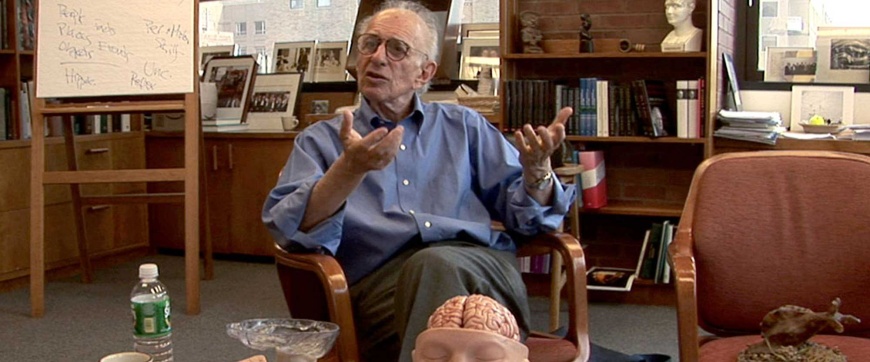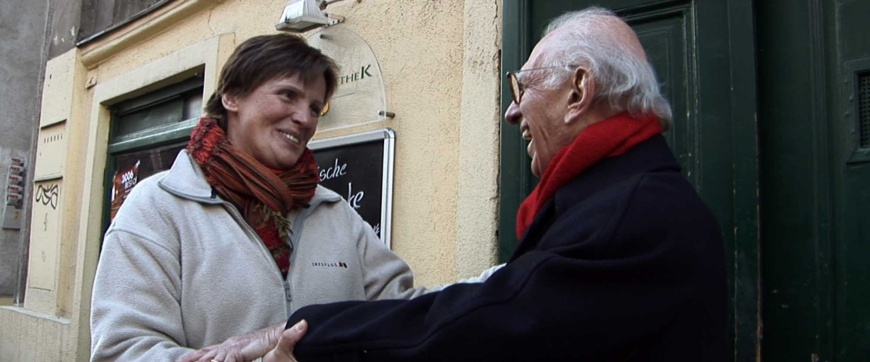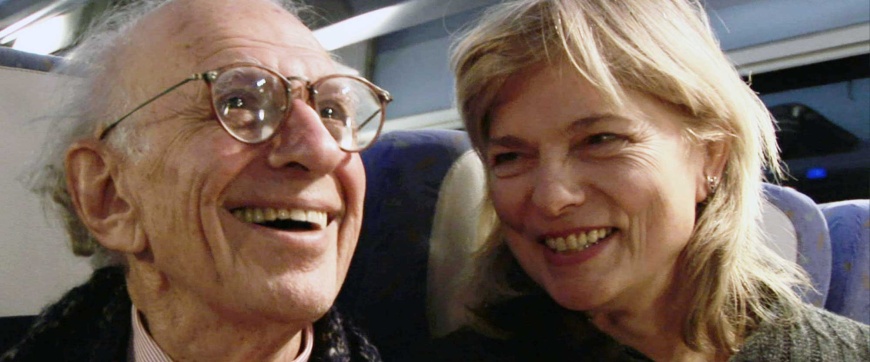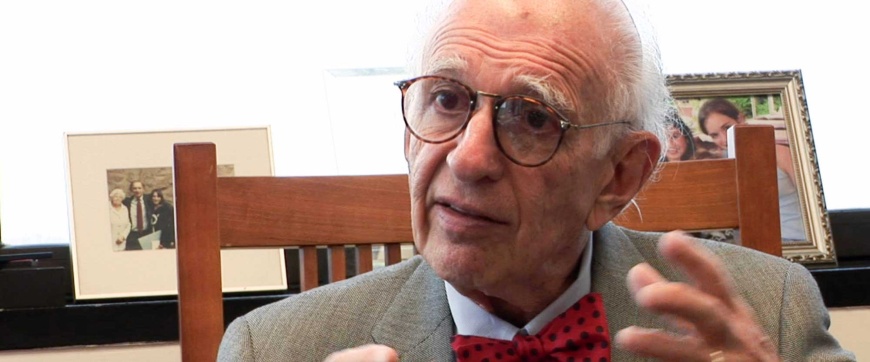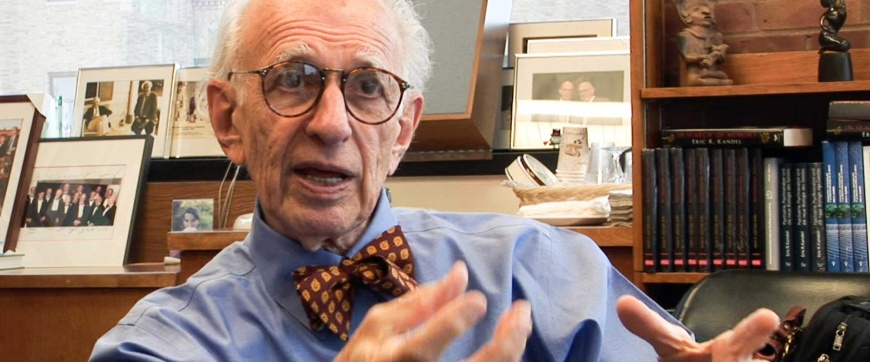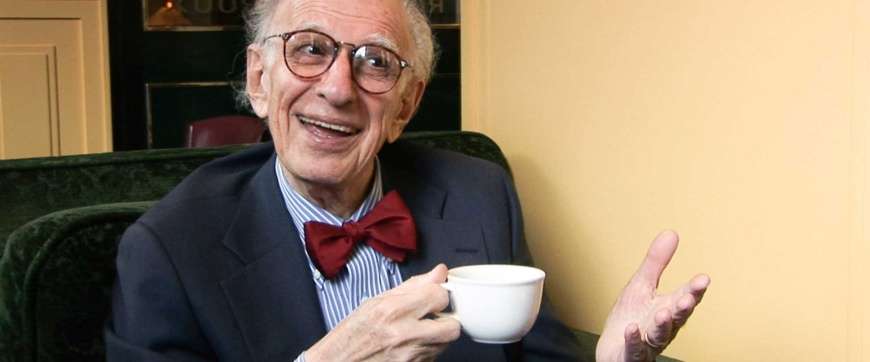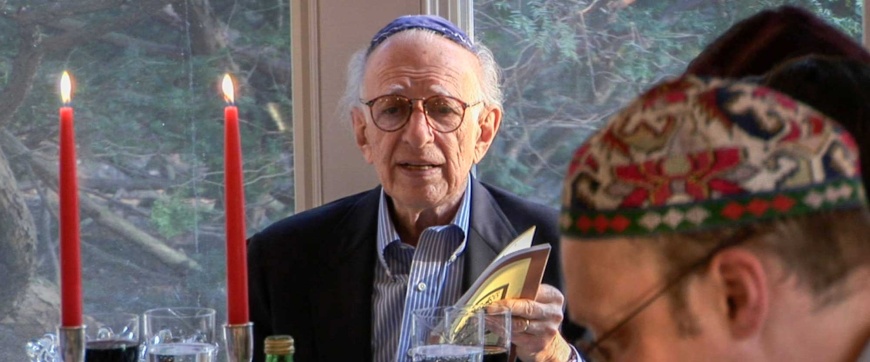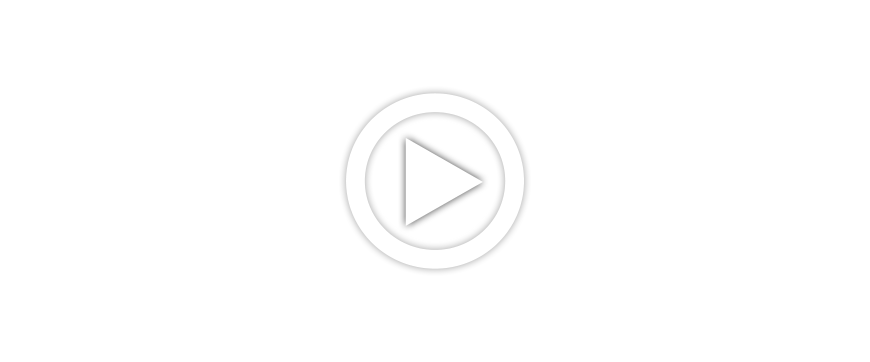Eric Kandel
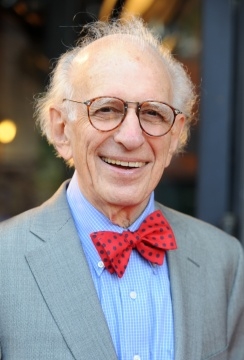
Eric Richard Kandel was born on 7 November 1929 in Vienna. His parents, Charlotte Zimels and Hermann Kandel, lived with him in Währing, a district of Vienna. Because of his Jewish background the family had to emigrate to the USA in 1939. As one of two pupils amongst 1,400 applicants he was awarded a scholarship to study at Harvard University after he had finished school in New York. Through his studies of Sigmund Freud and psychoanalysis he found his way to neurology. His particular interest in his research of the unconscious neuronal processes of the human brain was motivation and memory. But unlike most of the psychiatry students of his time, Kandel did not study the psychological but rather the biological processes of the brain. During his studies he got to know Denise Bystryn whom he later married.
Kandel’s research on the Aplysia Californica conch gave him the vital clues as to the function of the memory process: simple forms of learning can also be seen in single nerve cells in the brain of the conch. Thus Kandel and his team could determine which proteins play a decisive role in the transfer of memories from the short-term to the long-term memory – this means that anatomical changes in the nervous system are triggered by the long-term memory: memories are transformed into material in the brain.
Today Eric Kandel is an American citizen. Since 1974 he has been a member of the National Academy of Sciences in the USA; in 1997 he was awarded the German Order of Merit for Sciences and Arts. In 2000 he and his colleagues Avid Carlsson and Paul Greengard were awarded the Nobel Prize for Medicine for their recognition of signal transmissions in the nervous system. His autobiography “In Search of Memory: The Emergence of a New Science of Mind” was published in 2006, in which Kandel combines his research in a fascinating way with his life story. Today he is a Professor at Columbia University New York, Director of the Howard Hughes Medical Institute and a member of the board of trustees of the Institute of Science and Technology Austria.
Eric Kandel on "In Search of Memory" (transcript of video interview)
»And I hope that people see this film, will enjoy it also. I hope they will enjoy watching it as much as we enjoyed making it.«
On the origins of the film
»The work began when I met Petra in Berlin. I was attending a meeting of the Orden Pour le Mérite and she was there because Wim Wenders was being introduced into the Orden and she had done a documentary film on him. And she had heard about me and I think she had read the book, and we started to talk and she asked me whether I would be interested in doing a documentary. And she seemed very nice and people had told me that she's very good and that if I ever have an opportunity to do a film with her, I should do it.«
The work with Petra Seeger
»Working with her was a collaboration, but clearly she had a very specific set of things in mind and we carried them out. I mean, the trip to Europe was fairly obvious. We were going to hit the major points of Denise's life and my life, but the details we sort of discussed, but there was no script, there was no text, there was no rehearsal, nothing was done twice. So it was really very spontaneous. And one of the things that struck me as being so beautiful about the film, and really Petra's genius, was how she went back and forth between the autobiographical features of the film and the science. And the science she showed in really beautiful ways.«
His experiences during shooting
»I genuinely enjoyed the process, it took a fair amount of time, but it didn't feel that way. Petra did not consume my time. I mean, I was in my office working and she came and we talked and I continued to work and she shot some of the experiments. So it extended over a period of time, she came for Passover. Well, we celebrate Passover every year, so it didn't, you know, we started a little bit earlier, we may have finished it later, but it didn't detract or add time significant to what we were doing. We were going to go on this trip to Europe anyway. She has a picture of me swimming and playing tennis. This is what I do. So she pictured my daily life and she did it without interrupting my tempo, my style of life.«
The reasons for making the film
»I was worried that my friends, my scientific friends, might not like it. You know, people don't like scientists becoming movie actors all of a sudden and I'm uncomfortable with that role, but I [was] made more comfortable by two or three other events. First of all, I think we're entering an era in which it has become very important, even more important than in the past, for scientists to communicate with the general public. I think we need to do that for several reasons: one is we depend on the public for support. Science is expensive and it's the public that supports it, number one. Number two: we live in a world that is technologically very complicated and we ask ordinary people, who are not scientists, the intelligent public to make decisions about stem cells, about abortion, about the brain, about cancer, about brain tumors, about schizophrenia, that they're not equipped to understand unless we inform them, unless we teach them about it. So I think trying to explain one's science to the public is not a luxury, it's an obligation. And I found in writing the book that one of the most satisfying things about it is the people who didn't know anything about memory research could read about it and say, "Gee! I really understand that". And I think the most valuable part of the film for many people will be the science that emerges. Many people think that science is boring, that a scientist sits in a dark room with no lights and looks into a microscope talking to himself. They don't realize that science is a social activity, that you're interacting with young people, with students, with post-doctor fellows. It's an extremely enjoyable activity. Most of us are addicted to it, we enjoy science enormously, and I think for young people to see that this is a terrific career is important.«
The importance of his memory research
»The most important achievement in my work was to make it clear to my colleagues and the scientific community that a complex mental process like memory could be understood in cellular and molecular terms. I was not alone in doing this, but I think I was the most radical of the reductionists. I could see how you could use a very simple animal to reveal some of the features that characterize human memory storage, that memory is a biological process like cell growth, cell division; it could be studied with the same techniques. So I think I brought a philosophical perspective to bear on it and from an empirical point of view in terms of finding, I was the first person to show that learning involves a change in how nerve cells talk to one another, but it's called synaptic communication. I showed with certain forms of learning communication gets better, with other forms of learning it gets weaker. I showed that long-term memory involves alterations in the expression of genes, which was a surprising finding. I found particular molecules involved; in fact they're called CREB, a very important switch from short-term to long-term memory. And I showed that long-term memory involves the growth of new synaptic connections.«
The connection between the Holocaust and his work
»I had a very painful childhood experience being a Jew in Vienna when Hitler came into Austria, and it is interesting that I've spent my life studying memory. And in some ways this is like treating a post-traumatic stress disorder. You come back to it in order to master it, and I think to some degree this is true. And also the fact that I study memory is related to this. One of the sort of major themes of post-Holocaust thinking is, '"Never Forget"... that we should always remember what happened there in order to not allow any racial hatred, any anti-Semitism to recur. And I think that my biological science in essence is an attempt to provide a, you know, an underpinning for that model, for that way of thinking.«
About the influence of the Holocaust on his life
»Well, I mean I don't think about the Holocaust every day, I think about it periodically. You know, it influences the gratitude I feel to the United States, it's influenced my marriage. I mean, I married a woman from Europe who had a difficult experience during the war and we bond together very strongly because of that. The nun who was in the film, Yvonne, Denise has nominated for one of the Christian Just and she, Denise, flew over to Cahore for the ceremony, I mean, we're both very much involved in our each other's past. I'm trying to encourage her to write a book about her experiences in the convent. She's done a lot of research on that. So it's been, you know, it's molded my character. For better or for worse.«
About he sees himself portrayed in the film
»Petra had told me beforehand that everyone who has a film about themselves is uncomfortable seeing the film and I was intensely uncomfortable about seeing myself in the film, you know. Ninety minutes of 'ha ha ha' is more than anybody can stand, and also a film is a creative process, so Petra picked up certain themes in my life that were completely accurate, but they play a more prominent role in the film than in my life. For example, we have a scene in Brooklyn in which I want to see whether anybody remembers my father's store, so I stop five people in a row and ask them, "Do you remember a haberdashery store on Church Avenue?". Well, I don't normally stop five people and ask them questions like this, but here all five of them are present. And it shows an aspect of me. I am a social person, I enjoy interacting with people. That comes out sort of more dramatically in the film than I sense it in myself. I like very much being a Jew. I feel I have a strong Jewish identity. That aspect of my life is emphasized more in the film than I see it present in my daily life, but it's completely accurate. It's just something she saw as being important for her vision of me. I don't see it quite as important in my vision of myself, but it's important. It's just the degree of emphasis is the artist's privilege, this is what creativity is about.«
About the relationship between film and book
»Well, I think the film is an independent, creative view of what I try to do in my book. My book has two themes: one is my personal life and the other is my science. And it interweaves the two and Petra interweaves it in a completely different, new, and in some ways more creative way, because she can jump back and forth with visual images in a way that you can't so easily do in a book. So for example, a marvelous scene at the beginning is, we're in the south of France and we're in the convent Denise was hiding in, and she was taught to take an escape route from the courtyard of the convent underneath the river to the cathedral. If the Nazis were to come, she was to take that escape route to leave the convent. And she was there ten years ago and saw it, although most of the people didn't know where it was. There were some workmen working around and they knew there was a hole here and they led her to it. But when we came this time we couldn't find it, no one remembered it, we just absolutely couldn't find it. We looked and looked and couldn't find it. Sort of in search of memory. And all of a sudden some elderly woman comes out and she says, "Yes, there are some bushes over here and they're hiding the entrance". We move the bushes aside and there we could see the entrance way. Petra takes that scene and she switches to me in the lab and we're discussing how one remembers space and how there's a special representation in the brain for space and we see an experiment about spatial memory. I mean it's just wonderful. It would be hard to do this in a book.«
About his laugh
»I mean, I'm aware when I laugh, but I was unaware, that my laughter is distinctive. I can sit in an audience of a hundred people and I usually sit in the front and when I laugh my friends in the back know I'm in the room. And this has been true most of my life. So a very distinctive, recognizable laugh, but I also laugh a lot. So the two together.«
Eric Kandel



